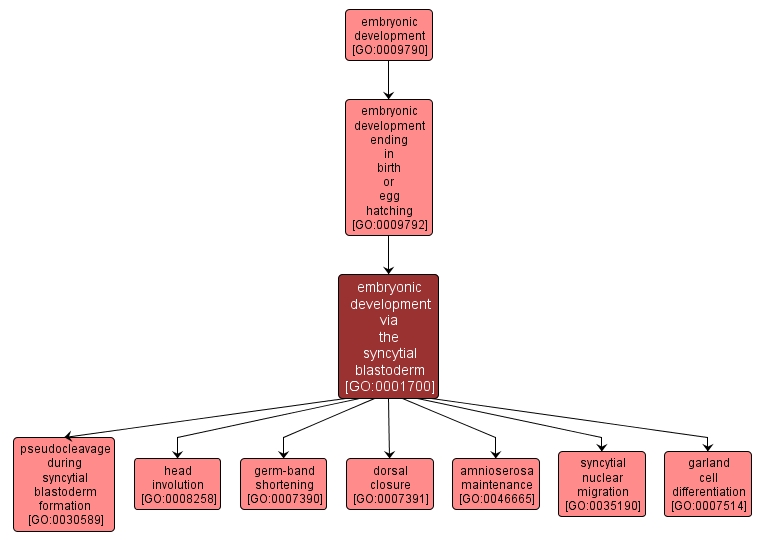GO TERM SUMMARY
|
| Name: |
embryonic development via the syncytial blastoderm |
| Acc: |
GO:0001700 |
| Aspect: |
Biological Process |
| Desc: |
The process whose specific outcome is the progression of the embryo over time, from zygote formation through syncytial blastoderm to the hatching of the first instar larva. An example of this process is found in Drosophila melanogaster. |
|

|
INTERACTIVE GO GRAPH
|














